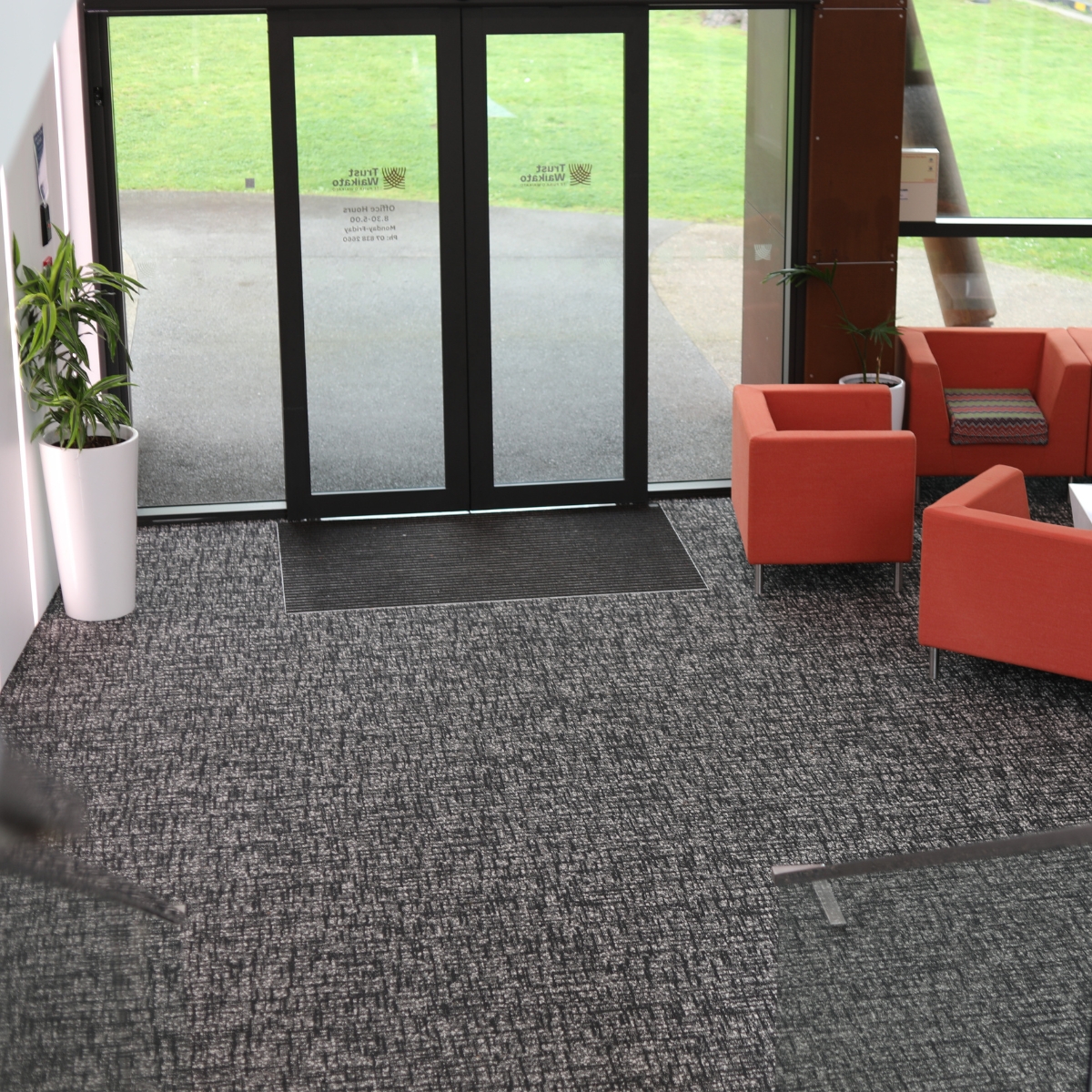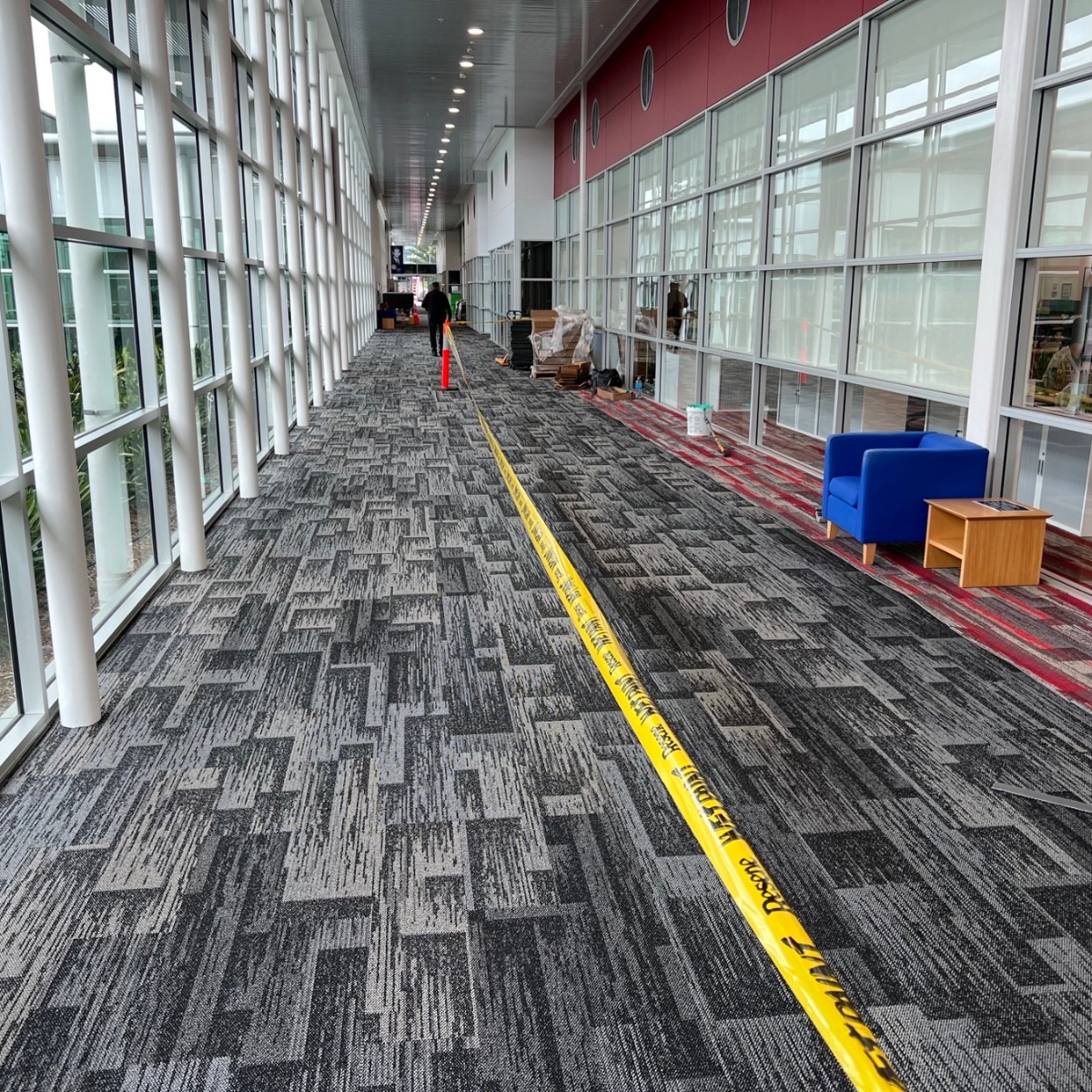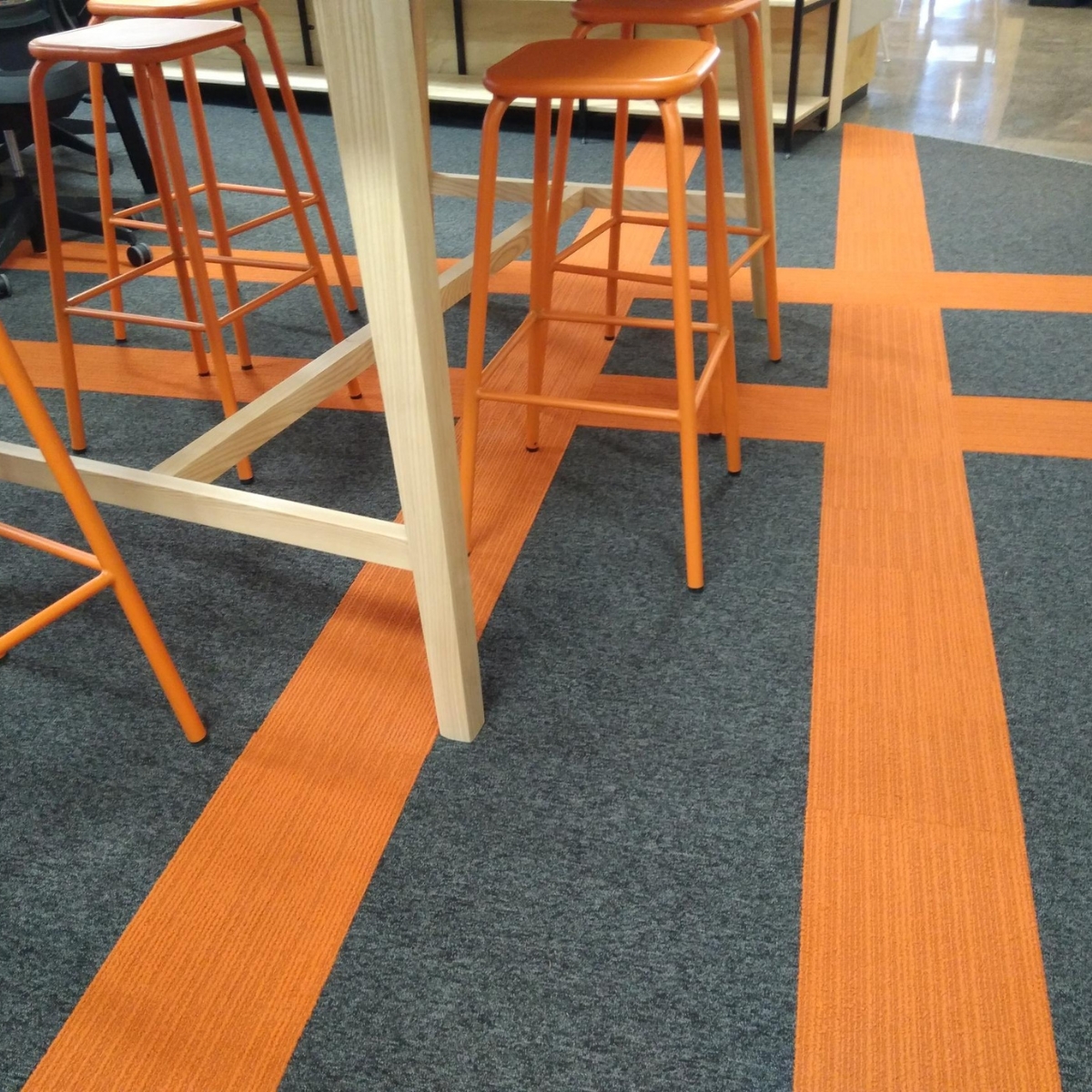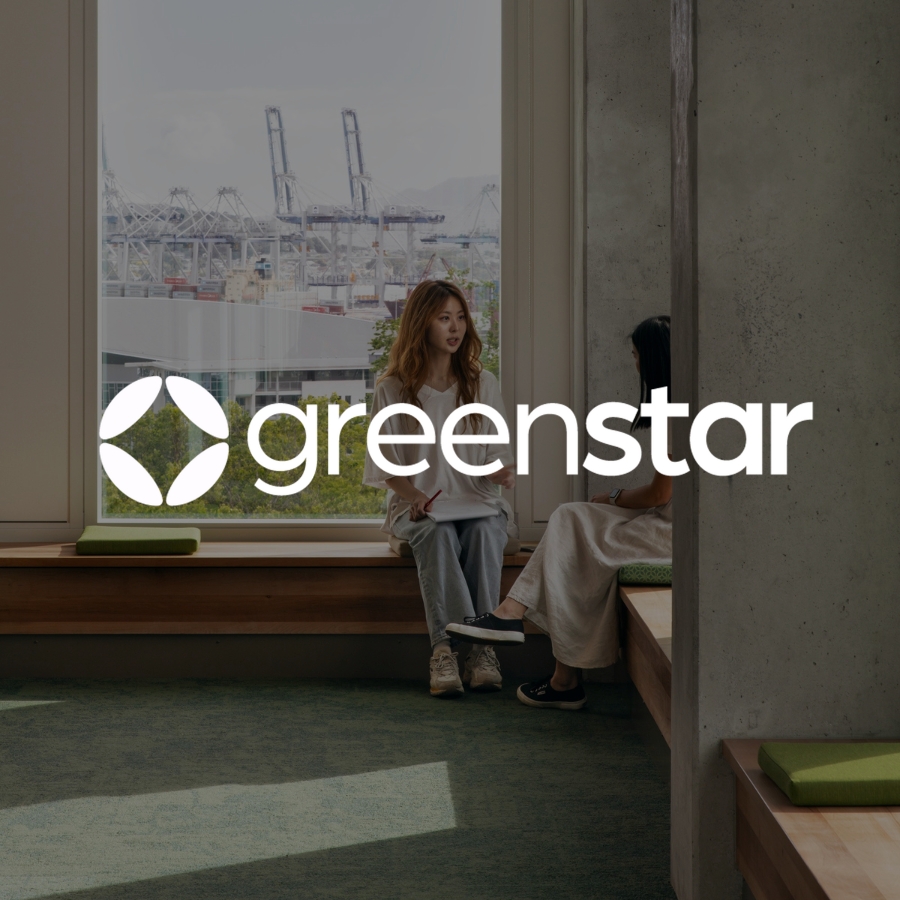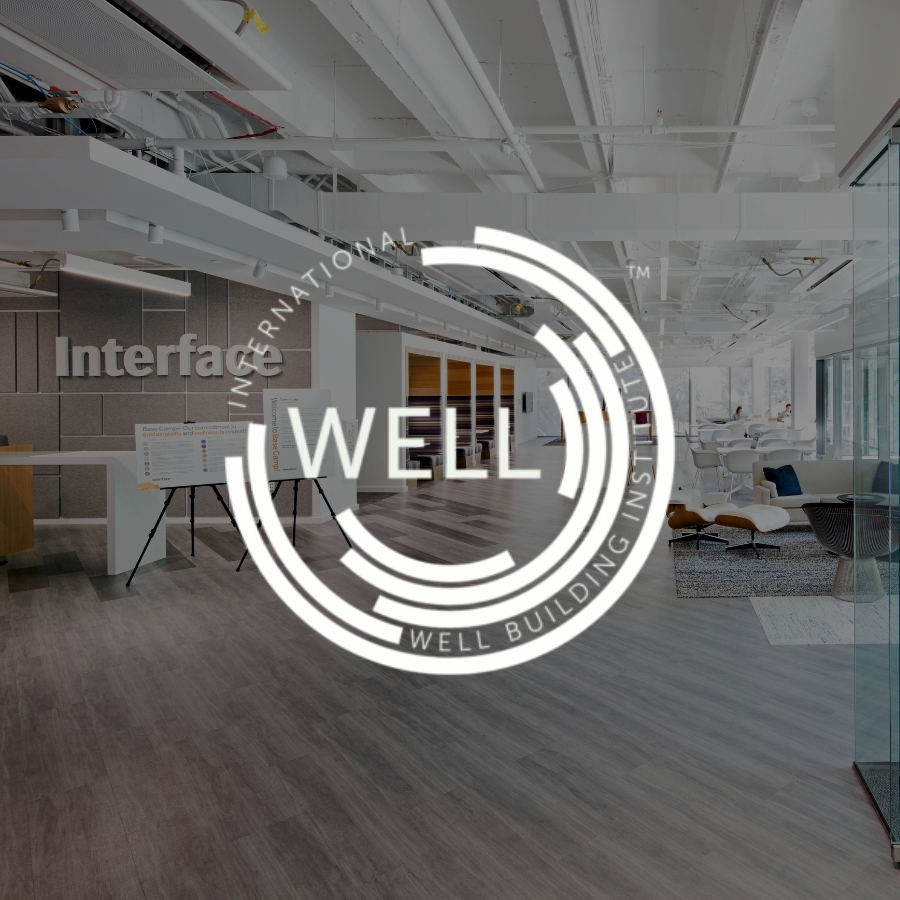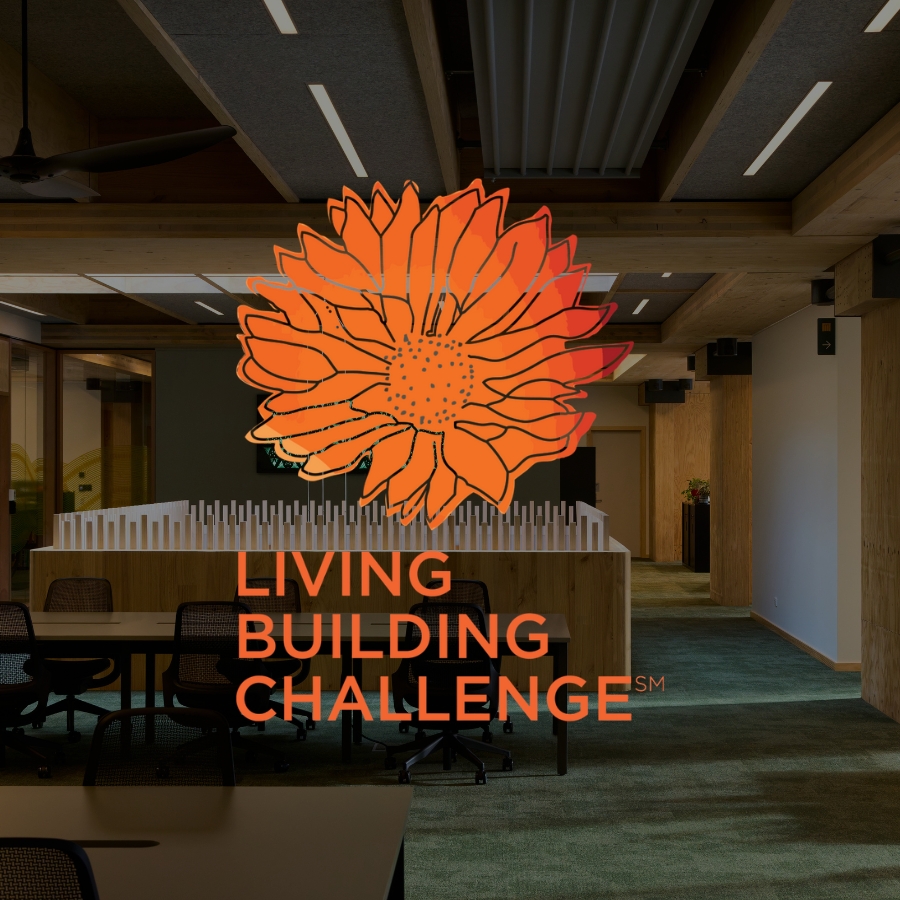
Sustainability Overview
Our Sustainability Journey
Sustainability is a journey, one which requires constant growth, awareness and innovation. It’s in the very fibre of our business structure; we genuinely seek to make a positive difference. From the products we supply, the relationships we have within the industry, and the way we work, everything we do is a conscious step towards the betterment of our industry and environment.
Our commitment to more sustainable business practices is ongoing, as is our commitment to running our business in a way that supports our industry to do better and be better in every way, challenging those that don't walk the talk.
We focus on best-in-class flooring products, Carbon Reduction, Product Stewardship, and Product Transparency. We also choose to publicly publish our Sustainability KPI's every year to keep ourselves accountable.
We support the New Zealand Green Building Council's efforts toward carbon reduction in our built environment. With 20% of carbon emissions in New Zealand each year attributed to the built environment we collectively are able to make a substantial difference to our environment by choosing low-carbon materials and designs.
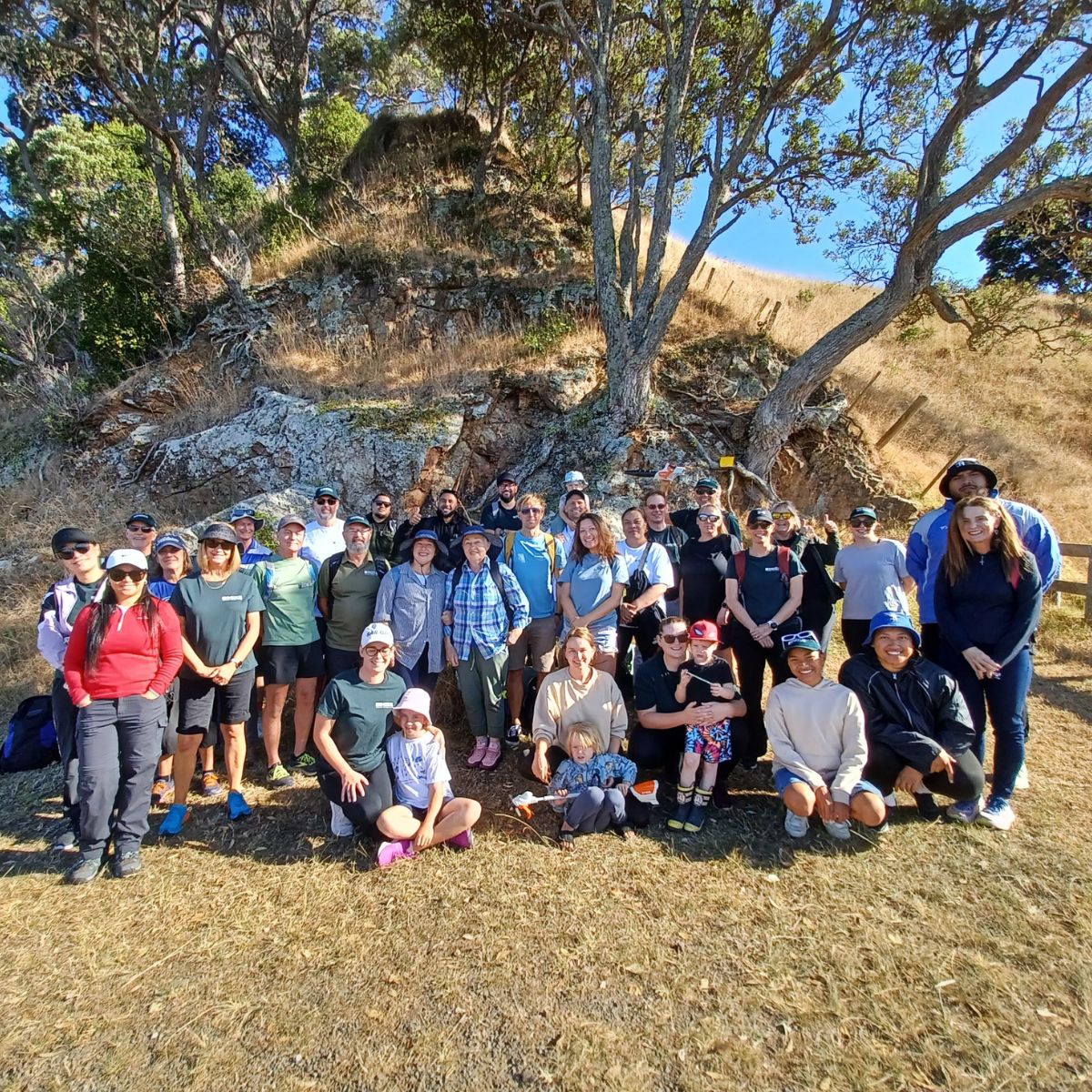
Carbon Reduction
Inzide’s inception in 1994 was brought about after Robb Donze was invited to be part of Interface’s revolution, to become a carbon neutral flooring business within 25 years (by 2020). We’re talking 1994 and carbon neutrality, this concept of ‘Mission Zero’, at the time was considered ‘eccentric’ and ‘revolutionary’. The step change that Ray Anderson lead was significant for the flooring industry. This set Interface on the path to becoming one of the world’s most sustainability-minded businesses in the world. What great foresight and one which has had a huge impact on the way we do things at Inzide.
Net carbon neutrality is a fantastic example of this.
Inzide has been net carbon neutral certified organisation through the Toitu carbon neutral program since 2006, and for the first 15 years after that we were the only net carbon neutral certified flooring business in New Zealand. We have recently seen competitors join Toitu and start tracking and now offsetting their carbon in the few years. This is positive competition in action, something we wish to see more of in the future.
Our Goals
Reports
Carbon Accounting
We are proud of our environmental stance and believe that carbon accounting is the cost of doing good business in the 21st century. We also follow a rule of transparency, showing our environmental metrics on our website. It keeps us honest and accountable for the actions we take while providing a leadership position to the flooring industry. Change can come from anywhere and 'a ripple can turn into a wave of change'.
We know that we supply the best flooring solutions in the New Zealand marketplace. We know that we do this while remaining uncompromised in our purpose. Because there is nothing like competition to turn that ripple into a wave.
At Inzide we measure, manage, reduce and mitigate our carbon footprint. Toitu, through their carbonzero program, holds us responsible for the carbon created in our management plan.
Their yearly audit provides a temperature check on the state of our carbon reduction health. It’s not always easy doing right but we know that treating the environment as a “free good” is wrong.
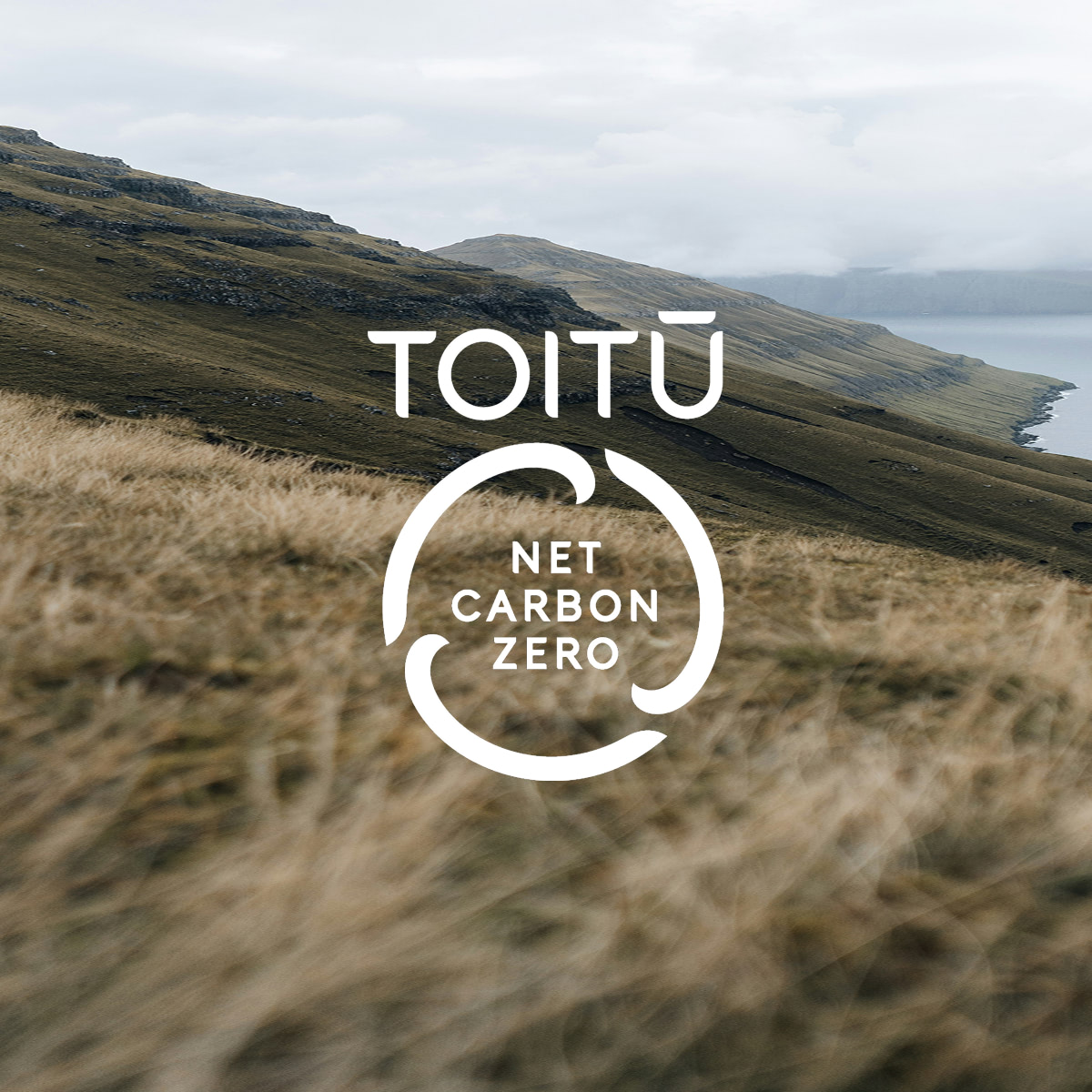
KPIS
| KPIs | 2025 | 2024 | 2023 | 2022 | 2021 | 2020 | 2019 | 2018 | 2017 | 2016 | 2015 |
|---|---|---|---|---|---|---|---|---|---|---|---|
| 63 | 45 | 50 | 45 | 48 | 42 | 24 | 30 | 34 | 27 | 26 | |
| 25% | 32.1% | 35% | 33% | 31% | 39.9% | 42.6% | 39.8% | 45.4% | 40% | 47.5% | |
| 4.5% | 3.6% | 7.5% | 9.6% | 2.4% | 4.3% | 3.5% | 5.8% | 8.0% | 11.2% | 15.4% | |
| 0.66% | 0.94% | 0.30% | 0.40% | 1.25% | 0.40% | 1.10% | 0.40% | 1.00% | 0.30% | 1.00% | |
| N/A | N/A | 26.4% | 18.7% | 11.8% | 14.8% | 17.9% | 23.5% | 28.5% | 22.6% | 30.3% | |
| 578* | 426* | 457* | 555* | 575* | 445 | 391 | 508 | 507 | 468 | 341 | |
| 1.07* | 0.96* | 0.84* | 1.31* | 1.44* | 1.03 | 1.15 | 1.21 | 1.14 | 1.12 | 1.04 | |
| 587 | 553 | 531 |
Product Stewardship
Product stewardship is an approach to managing the environmental impacts of a product from inception to end of life. Ultimately with the goal to eliminate the loss of the resource to landfill, going from a linear model of ‘Take. Make. Waste’ to a closed loop, supporting the movement towards a Circular Economy. When closing the loop on a products life cycle, recycled content becomes an important metric to be aware of.
There’s a few parts to the term “recycled content” where green-washing creeps in. It is important to understand the differences to make the best decision as a consumer to support those business which are investing in our future by being product stewards.
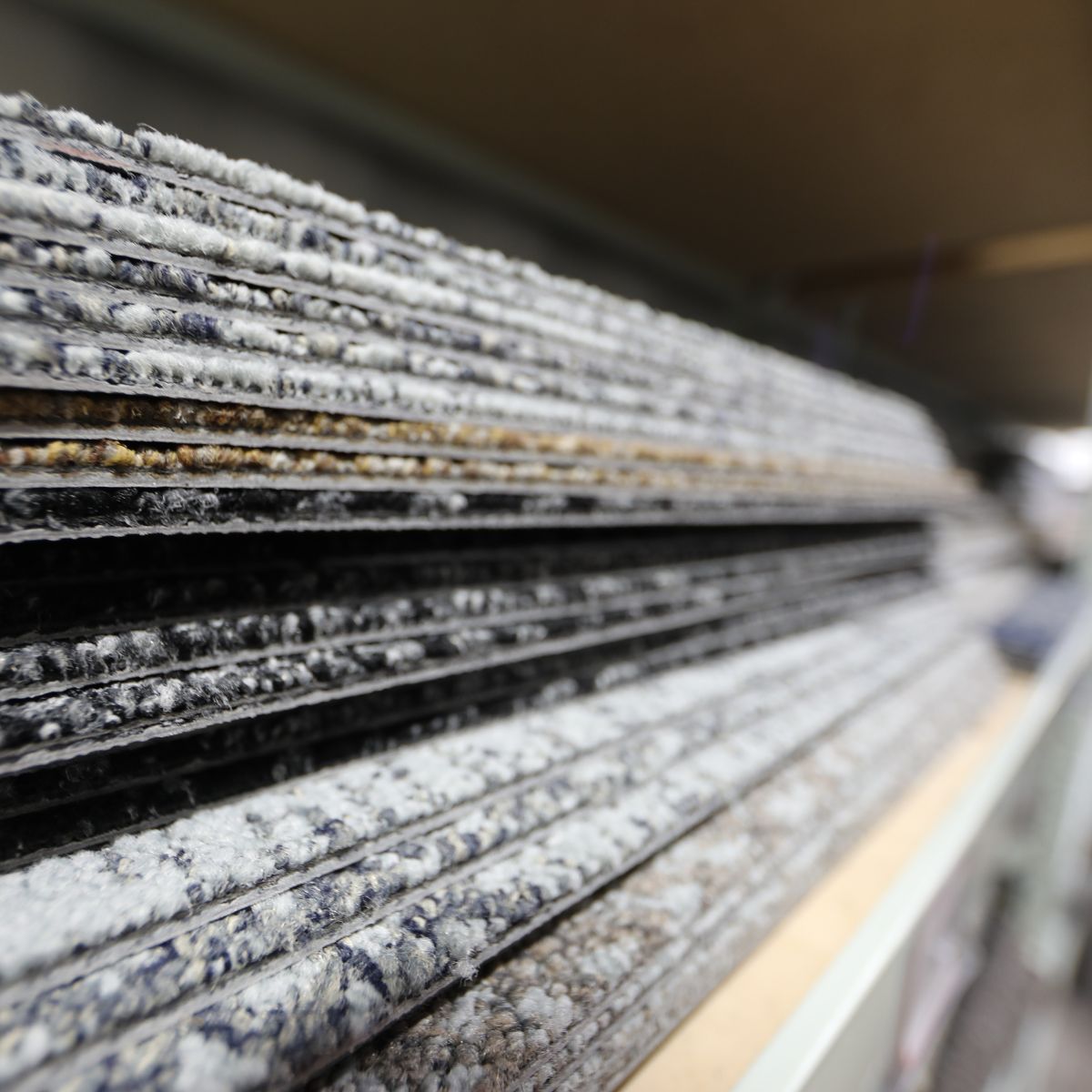
Circular Economy
Understanding Product Stewardship
Recycled content is simply manufacturing waste being brought back into the manufacturing process. Good in it’s intention until you understand that sustainable manufacturing should eliminate waste from the process to begin with.
This is demand that drives the circular economy, but there are 2 forms of post-consumer waste sources that occur…
- Those materials that have become waste from a separate product stream
- Those that are from the product that it will then be re-manufactured into, this option is called “closed-loop”.
The first appears to be a good solution but in reality is a short-sighted solution which shifts the global burden of waste onto the next generation.
Let’s use PET plastic drink bottles as an example.
Frequently used in carpet now, PET plastic drink bottles go through a process of being melted down and re-manufactured, but through this process the structural integrity of the plastic polymers is diminished and therefore the carpet is unable to be recycled at the end of its short “on the floor” life.
Ultimately this process is shifting the landfill burden of this plastic stream from overseas to New Zealand. This down-cycling process is detrimental to our environment and shifts the waste conundrum to New Zealand, an island nation unable to cope with the current level of landfill burden.
In a country where we value and benefit from our “clean-green” impression the world has of us, products like this should be banned from entering. Only those that have verified closed loop end-of-life solutions should be welcomed if we are to meet our waste and emissions targets for a better future.
Inzide is currently the only Ministry for Environment, Product Stewardship Certified Flooring Supplier in New Zealand.
Meaning, the Carpet Tile and Luxury Vinyl Tile products from Interface which we sell in the New Zealand have high recycled content and are 100% recyclable into new flooring at the end of the 15+year warranty period with an active recovery program in place.
In 2021 we were re-certified for the next 7 years to meet the Ministry for Environments requirements to be certified as active Product Stewards. To achieve this we work closely with both A&D and contractors within the building industry to recover “old” Interface flooring when it is uplifted and return it to Interface, the manufacturer, where one of two things will happen;
If it is still in “good” condition it will go into a re-use program to live out many more years on the floor before it can then be recycled. However if it is deemed to be at the “end of life” it is then stripped back to the material layers and re-manufactured into high quality, commercial grade carpet tiles for another 15+ years on the floor,
Click below to learn more about Inzide’s Re-Entry Product Stewardship scheme.
View our projects that have contributed towards the ReEntry Recycling scheme:
When it came time to replace the existing carpet tiles, Trust Waikato was committed to finding a recycling solution, the answer was the Interface ReEntry programme. They contacted Van Dyks Flooring Xtra, the flooring contractor, who collaborated with Inzide to support this kaupapa. The team at Van Dyks carefully lifted and prepared the carpet tiles for transport to Inzide. From there, the pallet will be shipped back to the manufacturer, Interface. The carpet tiles will enter the proprietary ReEntry® process, giving the materials a second life in the circular product life-cycle of Interface flooring.
With 20% of New Zealand’s carbon emissions attributed to the built environment, there is a huge opportunity to improve Aotearoa’s carbon position for the future of our world. To date, approximately 6580m² of Interface Carpet tiles have been uplifted from the Stewart building. Three containers were sent back to Australia in 2022 to be recycled into new Interface carpet tiles. This is approximately 70 tonnes of carpet tile diverted from landfill.
“In everything we do we look to minimise our impact on the environment. We were pleased to learn that recycling was an option for the carpet tile in the old office space and are very proud to have supported the ReEntry initiative from Interface.” – David Coombes Flight Centre MD.
1950m² (11 tonnes) of Interface carpet tile was the existing floor covering to be uplifted and of course, replaced with Interface carpet for a further 15 years.
Product Transparency
There is a huge array of product information on flooring which covers performance, area of use and sustainability. This can be an overwhelming amount of information but is essential in understanding the suitability and impact of a product.
-
Environmental Product Declarations (EPDs) signal a manufacturer’s commitment to measuring and reducing the environmental impact of its products and services and report these impacts in a hyper-transparent way. With an EPD, manufacturers report comparable, objective and third-party verified data that show the good, the bad and the evil about the environmental performance of their products and services.
-
Life Cycle Assessments (LCAs) are a systematic method used to evaluate the environmental impacts associated with all stages of a product’s life—from raw material extraction, manufacturing, and transportation to use, maintenance, and end-of-life disposal or recycling. By analyzing factors like energy use, carbon emissions, water consumption, and waste generation, LCAs provide a comprehensive picture of a product’s sustainability. This approach helps designers, manufacturers, and decision-makers identify opportunities to reduce environmental harm and make more informed, responsible choices throughout the supply chain. LCAs are often used in sustainable product development, certification processes, and environmental reporting.
-
Health Product Declarations (HPDs) are standardized reports that disclose the contents of building products and the potential health impacts associated with those materials. Developed by the Health Product Declaration Collaborative, HPDs provide transparent information about product ingredients, including chemicals and substances down to a defined threshold, and assess them against established hazard lists. This helps architects, designers, and specifiers make informed decisions to create healthier indoor environments. HPDs support material transparency in green building certifications like LEED and WELL, and are a key tool in promoting healthier, more sustainable construction practices.
-
Material Safety Data Sheets (MSDS), now more commonly referred to as Safety Data Sheets (SDS), are detailed documents that provide essential information about the properties, handling, storage, and emergency measures related to hazardous chemicals in a product. Required by occupational health and safety regulations, MSDS include data such as chemical composition, potential health effects, first aid instructions, safe handling procedures, and spill or fire response guidelines. These sheets are crucial for protecting workers, ensuring workplace safety, and complying with legal requirements around the use of potentially hazardous substances in manufacturing and construction.
-
Volatile Organic Compounds (VOCs) are carbon-based chemicals that easily evaporate at room temperature and are commonly found in building materials, furnishings, paints, adhesives, and cleaning products. Many VOCs can contribute to indoor air pollution and may have short- or long-term health effects, including eye, nose, and throat irritation, headaches, and in some cases, more serious respiratory or neurological impacts. In the built environment, limiting VOC emissions is key to improving indoor air quality and occupant well-being. Products with low or no VOCs are preferred in green building standards such as WELL, LEED, and Green Star.
-
Light Reflectance Value (LRV) is a measurement, expressed as a percentage from 0 to 100, that indicates how much visible light a surface reflects. A value of 0 means the surface absorbs all light (pure black), while 100 means it reflects all light (pure white). LRV is an important consideration in interior design, architecture, and product specification, as it affects how light or dark a space feels, energy efficiency, and visual contrast—particularly for accessibility. Selecting materials with appropriate LRV values can enhance natural lighting, reduce the need for artificial lighting, and support wayfinding and safety for people with visual impairments.
-
ISO 9001 and ISO 14001 are internationally recognized standards developed by the International Organization for Standardization (ISO) that support consistent quality and environmental management across industries.
ISO 9001 focuses on quality management systems (QMS) and outlines the criteria for consistently delivering products and services that meet customer and regulatory requirements. It emphasizes continuous improvement, risk-based thinking, and customer satisfaction.
ISO 14001, on the other hand, is centered on environmental management systems (EMS). It provides a framework for organizations to manage their environmental responsibilities in a systematic way, aiming to reduce environmental impact, comply with regulations, and drive sustainability.
Together, these standards demonstrate an organization’s commitment to quality, operational efficiency, and environmental stewardship.
-
A Technical Data Sheet (TDS) is a document that provides detailed technical information about a product’s physical and performance characteristics. It typically includes specifications such as dimensions, weight, material composition, installation guidelines, performance ratings (e.g. fire resistance, slip resistance, acoustic performance), and compliance with relevant standards. TDS documents are used by architects, designers, engineers, and contractors to evaluate whether a product is suitable for a particular application. Unlike an MSDS/SDS, which focuses on health and safety, a TDS is purely technical and performance-oriented, helping ensure products meet project and regulatory requirements.
-
New Zealand Building Code Compliance Reports are documents that demonstrate how a proposed building product, system, or design meets the performance requirements set out in the New Zealand Building Code (NZBC). These reports are often prepared by manufacturers, suppliers, or consultants and provide evidence—such as test results, assessments, certifications, or expert opinions—that a product or solution complies with specific clauses of the Code (e.g., fire safety, moisture control, structure, durability).
Common types of compliance reports include:
- CodeMark Certificates – independently verified certificates of compliance with the NZBC.
- BRANZ Appraisals – third-party assessments of building products and systems.
- Producer Statements (PS1–PS4) – engineering or design-based declarations from professionals.
- Product Technical Statements (PTS) – supplier-issued summaries of compliance and performance evidence.
These reports are essential for building consent applications and ensure that all components used in a construction project meet legal safety, health, and durability standards.
-
BPIR Downloads
A Building Product Information Requirement (BPIR) is a mandatory document introduced under the New Zealand Building Act to support better decision-making and improve product assurance in the construction industry. Effective from December 2023, BPIRs must be provided by manufacturers or suppliers for certain building products and are required for building consent applications.
A BPIR includes key information such as:
- Product description and scope of use
- Evidence of how the product complies with the New Zealand Building Code (NZBC)
- Design and installation requirements
- Maintenance guidelines
- Manufacturer/supplier details and date of issue
BPIRs aim to increase transparency, accountability, and trust in the use of building products by ensuring consistent, accurate, and accessible product information for designers, builders, and building consent authorities.

Building Certification Systems
The above reports, data sheets and certifications provide the necessary information needed to meet the requirements of the various global building certification systems. There are 3 that feature in New Zealand, these are; Green Star, WELL and Living Building Challenge, with Greenstar being the most popular with over 350 commercial buildings a year achieving certification.
Green Star is transforming the way our built environment is designed, constructed and operated.
Certification works toward:
- Reducing the impact of climate change
- Enhancing our health and quality of life
- Restoring and protecting our planet’s biodiversity and ecosystems
- Driving resiliency in buildings, fitouts and communities
- Contributing to market transformation and a sustainable economy
The WELL Standard is a library of over 500 evidence-based, design, policy and operational strategies that, when implemented, can improve the health and well-being of your people.
- Make the air better to breathe
- Ensure the water is safe to drink
- Mitigate burnout
- Boost sleep and cognitive well-being
- Foster a culture of health
- Select healthier materials
- Advance diversity, equity and inclusion
- Encourage daily movement
- Address the diverse needs of hybrid, remote and in-person workforces
The Living Building Challenge is a philosophy, advocacy tool, and certification program defining today’s most advanced measure of sustainability in the built environment. It addresses all buildings at all scales and is an inclusive tool for transformative design. Whether the project is a single building, a renovation, an infrastructure project, or a park, the Living Building Challenge provides a framework for designing, constructing, and improving the symbiotic relationships between people and all aspects of the built and natural environments.
Living Buildings are:
- Regenerative buildings that connect occupants to light, air, food, nature, and community.
- Self-sufficient and remain within the resource limits of their site.
- Create a positive impact on the human and natural systems that interact with them.

